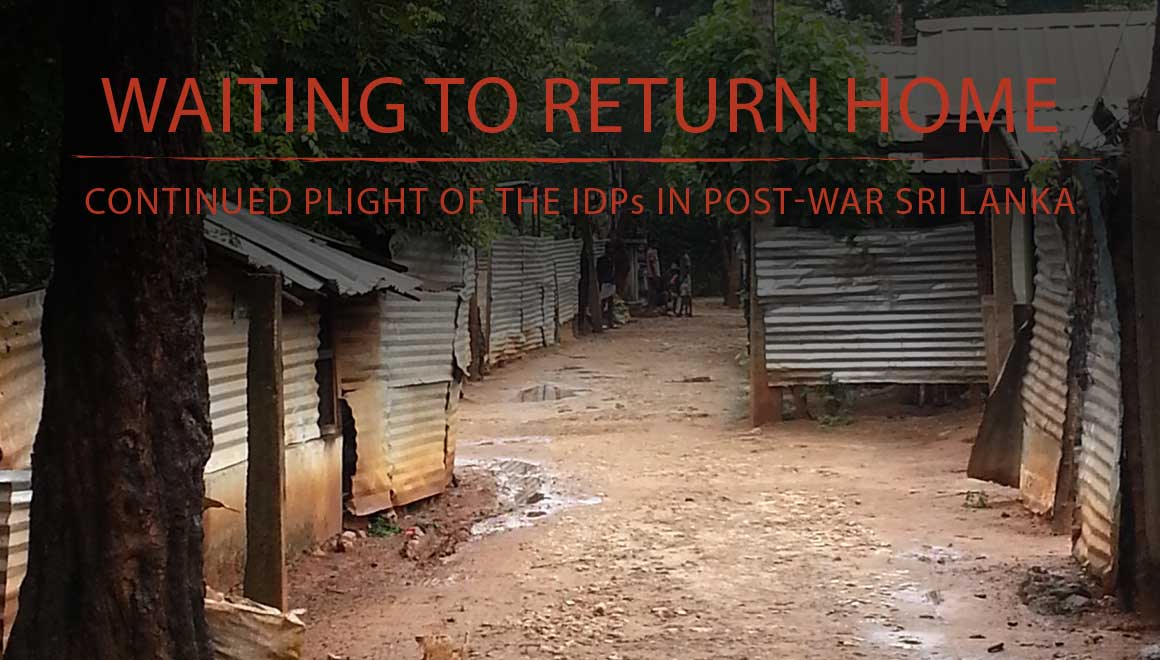by Oakland Institute, California, May 31, 2016
http://www.oaklandinstitute.org/sites/oaklandinstitute.org/files/SriLanka_Return_Home_final_web.pdf

Introduction
Sri Lanka’s 26-year-long civil war officially ended in 2009 with the defeat of Tamil separatists, led by the Liberation Tigers of Tamil Eelam (LTTE), through a bloody military offensive that led to widespread destruction, the killing of tens of thousands of civilians by government shelling and aerial bombing, and the displacement of the entire population living in rebelcontrolled territories.1 The Northern and Eastern Provinces of Sri Lanka – Tamil strongholds, where the final offensives played out – were especially devastated with significant losses of life, land, infrastructure, and livelihoods.2
In May 2015, the Oakland Institute released The Long Shadow of War: The Struggle for Justice in Postwar Sri Lanka and I Speak without Fear: Where Are Our Loved Ones Who Have Been Abducted, Arrested, and Disappeared?3 The reports exposed how a silent war continues in the country under a different guise. One major issue is the continued displacement of people from their lands and homes, a result of the persistent military occupation of the Northern and Eastern Provinces.4
The Oakland Institute’s reports were released amidst growing international belief that change was afoot in Sri Lanka. In January 2015, Maithripala Sirisena won the country’s presidential election on a platform that promised, amongst other things, to address corruption, restore an independent and impartial judiciary, and launch an inquiry into war crimes.5 One month after the elections, President Sirisena made his first pledge to return lands to the displaced.6
Well over one year into President Sirisena’s term, Sri Lanka’s Northern and Eastern Provinces remain heavily militarized. Tens of thousands of Tamils – if not more – remain displaced from their homes, living in Internally Displaced Persons (IDP) camps, with relatives, or as refugees abroad. According to the Internal Displacement Monitoring Centre (IDMC), an estimated 73,700 people were internally displaced in the Northern and Eastern Provinces in July 2015, with the majority belonging to Tamil and Muslim minorities.7 The IDMC also estimated that several tens of thousands among the 794,000 who are registered as having returned to their homes, have still not achieved a durable solution to their displacement.8
This brief shares the voices and the ongoing struggles of the displaced in post-war Sri Lanka, despite promises made by the new administration in 2015. Names and details that could reveal the identity of those interviewed and the IDPs have been withheld because of the fear of retaliation and to ensure their safety. The brief highlights a harsh reality – amid United Nations resolutions, various task forces, and numerous government promises, tens of thousands continue to live in despair. Nearly thirty years on, the IDPs of Sri Lanka’s civil war are still waiting to return home.